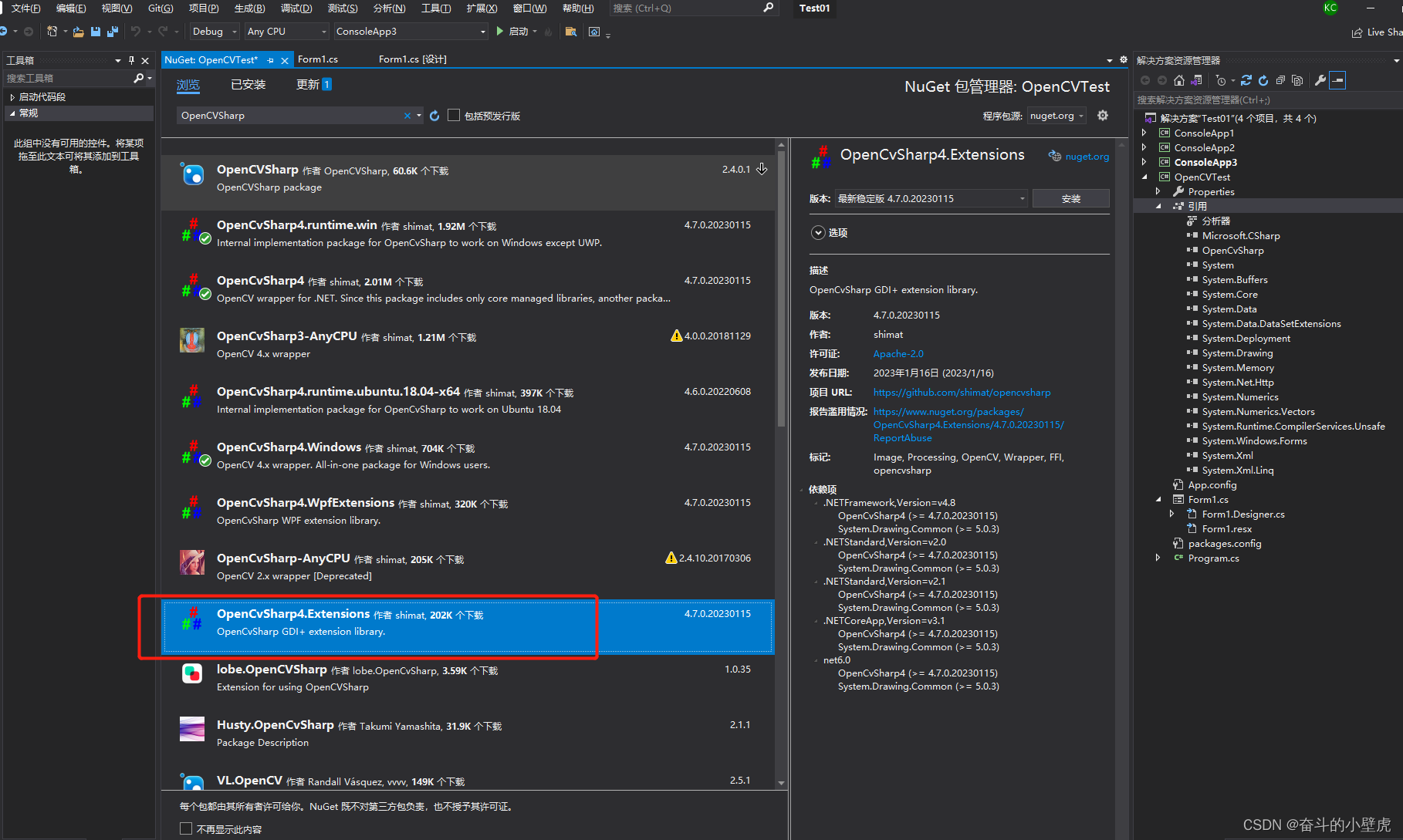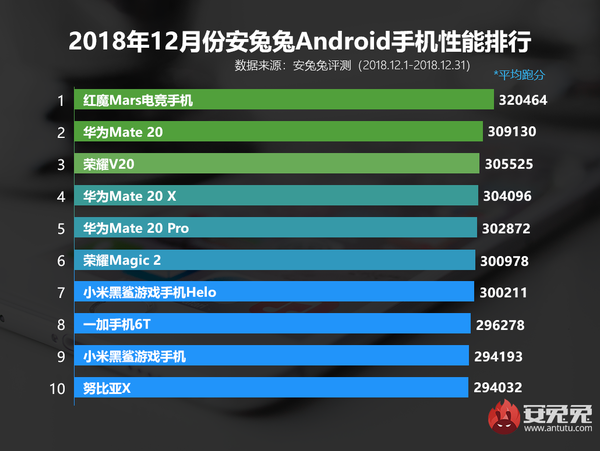目录
- 对Intel网卡进行调研
- 支持SR-IOV的网卡
- X520 X540 X550对比
- 区别
- 相同
- X520 X710 X810系列对比
- 区别
- X520网卡文档翻译
- Overview
- Best choice for virtualization
- 可靠的性能
- Features:general
- Features:IO features for Multi-core processor Servers
- Virtualization Features
- VMDq
- Next-Generation VMDq (64 queues per port)
- PC-SIG SR-IOV Implementation (64 virtual functions per port)
- Virtual Machine Load Balancing (VLMB)
- Advanced Packet Filtering
- X810网卡文档翻译
- Intel® Ethernet Network Adapter E810-CQDA1/CQDA2
- Key Features
- Application Device Queues (ADQ)
- Dynamic Device Personalization (DDP)
- RDMA
- Dynamic Device Personalization (DDP)
- Enhanced Data Plane Development Kit (DPDK)
- Protect, Detect, and Recover
- Other Features
- Host Interface 主机接口 :
- Software Interface 软件接口:
- Packet Processing
- Virtualization
- RDMA
- QoS
- Manageability
- Power Management
- Time Synchronization
- Pre-Boot
- Security
- Intel® Ethernet Network Adapter E810-XXVDA2 与E810-XXVDA4
对Intel网卡进行调研
主要信息来自于intel ark 官网产品信息
https://ark.intel.com/content/www/cn/zh/ark.html
支持SR-IOV的网卡
实验需要用到支持单根虚拟化技术(Single Root I/O virtualization,SRIOV)的网卡,可以将一块物理网卡(PF)虚拟为多个虚拟网卡(VF),下面的链接里是Intel 支持SR-IOV技术的list
https://www.intel.com/content/www/us/en/support/articles/000005722/ethernet-products.html.
- 支持SR-IOV的千兆网卡(1GB)只有I350系列
- 支持SR-IOV的万兆网卡(10GB)包括:
X520(使用82599网络控制器)、X540、X550 - 支持SR-IOV的万兆以上网卡(40GB/100GB)包括:
X710、XXV710、XL710、X722、E810
X520 X540 X550对比
三款对比:
https://ark.intel.com/content/www/us/en/ark/compare.html?productIds=39774,69655,58954,88209
区别
1.电口和光口
X540 X550 只有电口(使用网线),有T1(单口)和T2(双口)版本
X520有光口(使用光纤)和电口版本,但T2电口已经停产,市面货不多。

2.PCIe、带宽等参数

3.X540相较于X520
https://www.jianshu.com/p/1d5910738082
Intel X540双口万兆网卡是创新在英特尔的领导下,驱动10gb以太网进入更广阔的服务器市场:
英特尔®以太网融合网络适配器X540是最低的成本在数据中心部署10 GbE的方法今英特尔X540采用低成本的Cat6和Cat 6A电缆。有可能这数据中心中已经存在电缆连接。英特尔降低成本和功耗的一种方法是将组件集成到单片机解决方案中。当然,集成是英特尔最擅长的。有了新的英特尔X540控制器,MAC和PHY集成到一个单片机解决方案。
相同
高级功能支持:
都支持Intel VT-C(用于连接的虚拟化技术),包括SR-IOV与VMDQ
都不支持RDMA
都支持数据直接访问(Direct Data I/O,DDIO或Direct Cache Access,DCA)
都支持智能卸载与以太网存储

X520 X710 X810系列对比
https://ark.intel.com/content/www/cn/zh/ark/compare.html?productIds=39774,88209,189534,192558
区别
-
PCIe
520 540 : PCIe 2.0
550 710: PCIe 3.0
810: PCIe 4.0 -
基本参数

-
高级功能
只有X810系列支持RDMA

X520网卡文档翻译
以下是X520系列产品简介
https://www.intel.com/content/www/us/en/products/docs/network-io/ethernet/network-adapters/ethernet-x520-server-adapters-brief.html
Intel® Ethernet Converged Network Adapter X520
Dual- and Single-Port 10 Gigabit SFP+ Ethernet Converged Network Adapters Provide Ultimate Flexibility and Scalability in Virtual and Unified Storage Environment
在虚拟化和统一存储环境中提供极致的灵活性与可伸缩性
Overview
Intel’s family of adapters, the Intel® Ethernet Converged Network Adapter X520 with SFP+ connectivity, are the most flexible and scalable Ethernet adapters for today’s demanding data center environments. Data center networks are being pushed to their limits. The escalating deployments of servers with multi-core processors and demanding applications such as High Performance Computing (HPC), database clusters, and video-on-demand are driving the need for 10 Gbps connections. Customers require flexible and scalable I/O solutions to meet the rigorous requirements of running mission-critical applications in virtualized and unified storage environments. Powered by Intel’s third-generation 10 GbE network controller, the Intel® Ethernet 82599 10 Gigabit Ethernet Controller, the X520 adapter family addresses the demanding needs of the next-generation data center by providing unmatched features for virtualization, flexibility for LAN and SAN networking, and proven, reliable performance.
Intel 的适配器系列,具有 SFP+ 连接性的英特尔® 以太网融合网络适配器 X520,是当今要求严苛的数据中心环境中最灵活和可扩展的以太网适配器。数据中心网络正被推到极限。具有多核处理器和要求苛刻的应用程序(如高性能计算 (HPC)、数据库集群和视频点播)的服务器部署不断升级,正在推动对 10 Gbps 连接的需求。客户需要灵活且可扩展的 I/O 解决方案,以满足在虚拟化和统一存储环境中运行关键任务应用程序的严格要求。 X520 适配器系列由英特尔第三代 10 GbE 网络控制器 Intel® Ethernet 82599 10 Gigabit Ethernet Controller 提供支持,通过提供无与伦比的虚拟化功能、LAN 和 SAN 网络灵活性,满足下一代数据中心的苛刻需求,和经过验证的可靠性能。
Best choice for virtualization
The explosive growth in virtualization is leading to an increasing demand for network performance. With more Virtual Machines (VMs) running on each multi-core server, networking traffic is dramatically increased, with each VM competing for available I/O bandwidth.
虚拟化的最佳选择虚拟化的爆炸性增长导致对网络性能的需求不断增加。随着更多虚拟机 (VM) 在每台多核服务器上运行,网络流量显着增加,每个 VM 都在争夺可用的 I/O 带宽。
Intel’s family of Intel Ethernet Converged Network Adapter X520 addresses networking bottlenecks in virtualized environments. These adapters enable network-intensive applications to achieve the performance expected in a virtualized environment.
英特尔的英特尔以太网融合网络适配器 X520 系列解决了虚拟化环境中网络的瓶颈。这些适配器使网络密集型应用程序能够在虚拟化环境中实现预期的性能。
The Intel Ethernet X520 family of adapters provides the best networking performance available in the industry, whether the physical port is configured in an emulation mode using the virtual switch in the Virtual Machine Monitor (VMM), or is directly assigned to a virtual machine.
英特尔以太网 X520 系列适配器提供业界最佳的网络性能,无论物理端口是使用虚拟机监视器 (VMM) 中的虚拟交换机配置为仿真模式,还是直接分配给虚拟机。
VMDQ:
In the emulation mode, Intel’s I/O technology, Virtual Machine Device queues1 (VMDq) optimizes network performance by offloading data sorting and copying from the software Virtual Switch in the VMM to the Intel Ethernet 82599 10 Gigabit Controller. This configuration is best suited for a large number of VMs running standard applications that have limited bandwidth and latency requirements.
在仿真模式下,英特尔的 I/O 技术 Virtual Machine Device queues1 (VMDq) 通过将数据排序和复制从 VMM 中的软件虚拟交换机卸载到英特尔以太网 82599 10 千兆位控制器来优化网络性能。此配置最适合运行标准应用程序的大量 VM,这些应用程序具有有限的带宽和延迟要求。
直接网络I/O/SR-IOV:
**For mission-critical applications, where dedicated I/O is required for maximum network performance, users can assign a dedicated virtual adapter port to a VM.
对于需要专用 I/O 以实现最大网络性能的关键任务应用程序,用户可以为 VM 分配专用虚拟适配器端口。
Using the PCI-SIG SR-IOV capability on an Intel Ethernet X520 adapter provides direct VM connectivity and data protection across VMs.
SR-IOV technology enables the data to bypass the software virtual switch and provides near-native performance. It assigns either physical or virtual I/O ports to individual VMs directly.
This technology is best suited for applications that demand the highest I/O throughput and lowest latency performance such as database, storage, financial and other application.
在英特尔以太网 X520 适配器上使用 PCI-SIG SR-IOV 功能可提供跨 VM 的直接 VM 连接和数据保护。
SR-IOV 技术使数据能够绕过软件虚拟交换机并提供接近本机的性能。
它直接将物理或虚拟 I/O 端口分配给各个 VM。
该技术最适合需要最高 I/O 吞吐量和最低延迟性能的应用程序,例如数据库、存储、金融和其他应用程序。
PCI-SIG SR-IOV is a mechanism for devices to advertise their ability to be directly assigned to multiple virtual machines. SR-IOV enables the partitioning of a PCI Express* (PCIe) function into many virtual interfaces for the purpose of sharing the resources of a PCIe device in a virtual environment.
PCI-SIG SR-IOV 是一种机制,用于设备通告其直接分配给多个虚拟机的能力。 SR-IOV 支持将 PCI Express* (PCIe) 功能划分为多个虚拟接口,以便在虚拟环境中共享 PCIe 设备的资源。
These virtual interfaces are called Virtual Functions. Each virtual function can support a unique and separate data path for I/O-related functions within the PCIe hierarchy. Use of SR-IOV with a networking device, for example, enables the bandwidth of a single port (function) to be partitioned into smaller slices that can be allocated to specific VMs, or guests, via a standard interface.
这些虚拟接口称为虚拟功能。每个虚拟功能都可以为 PCIe 层次结构中的 I/O 相关功能支持唯一且独立的数据路径。例如,将 SR-IOV 与网络设备一起使用,可以将单个端口(功能)的带宽划分为更小的切片,这些切片可以通过标准接口分配给特定的 VM 或来宾。
The Intel Ethernet X520 family of adapters delivers the same functionality and throughput as ten dual-port, one gigabit adapters, saving cost, power, and complexity. For more information on virtualization please go to:
英特尔以太网 X520 系列适配器提供与 十个双端口、一个千兆位适配器相 同的功能和吞吐量,从而节省成本、功耗和复杂性。
有关虚拟化的更多信息,请访问:
www.intel.com/go/vtc.
###unified Networking and Storage
The family of Intel Ethernet X520 adapters lowers your data center total cost of ownership (TCO) by providing the ability to route LAN and SAN traffic over a single fabric.
统一网络和存储
英特尔以太网 X520 适配器系列通过提供在单个结构上路由 LAN 和 SAN 流量的能力,降低了数据中心的总体拥有成本 (TCO)。
Support for fiber Channel over ethernet (fCoe)
FCoE encapsulates Fiber Channel frames over standard Ethernet networks, enabling Fiber Channel to take advantage of 10 GbE networks while preserving its native protocol. The X520 adapters offer FCoE hardware acceleration to provide performance comparable to FC HBAs. The adapters support Data Center Bridging, also known as Converged Enhanced Ethernet (CEE), which enables customers to configure traffic classes and priorities to deliver a lossless Ethernet fabric. An Intel Ethernet Converged Network Adapter X520 reduces TCO by eliminating redundant fabrics and saves the cost of expensive FC HBAs and FC switch ports.
支持以太网光纤通道 (fCoe)
FCoE 封装了标准以太网网络上的光纤通道帧,使光纤通道能够利用 10 GbE 网络,同时保留其本机协议。 X520 适配器提供 FCoE 硬件加速,以提供与 FC HBA 相当的性能。这些适配器支持数据中心桥接,也称为融合增强型以太网 (CEE),使客户能够配置流量类别和优先级以提供无损以太网结构。英特尔以太网融合网络适配器 X520 通过消除冗余结构来降低 TCO,并节省昂贵的 FC HBA 和 FC 交换机端口的成本。
对 iSCSi 的支持适配器
Support for iSCSi
The adapters provide complete support for proven native OS and VMM iSCSI initiators as well as iSCSI boot. Historically, CRC32C computation has degraded system performance, but now with the CRC instruction set included in the latest Intel® Xeon® processors, CRC validation is possible with minimal impact to network throughput while delivering superior data integrity.The Intel Ethernet family of X520 adapters do it all: 10 Gigabit LAN, FCoE, and iSCSI; truly delivering on the promise of unified networking.
为经过验证的本机操作系统和 VMM iSCSI 启动器以及 iSCSI 引导提供完整支持。从历史上看,CRC32C 计算会降低系统性能,但现在最新的英特尔® 至强® 处理器中包含 CRC 指令集,可以在对网络吞吐量影响最小的情况下进行 CRC 验证,同时提供卓越的数据完整性。英特尔以太网系列 X520 适配器可以这一切:10 Gigabit LAN、FCoE 和 iSCSI;真正兑现统一网络的承诺。
可靠的性能
reliable performance
The family of X520 adapters includes a number of advanced features that enable it to provide industry-leading performance and reliability.
X520 适配器系列包括许多高级功能,使其能够提供行业领先的性能和可靠性。
Security Optimizations
The adapters support IPsec offload for Microsoft’s* Network Access Protection (NAP), Active Directory,* and future security capabilities in Windows 7*. An X520 adapter enables customers to run a secure network environment without sacrificing performance.
安全优化
这些适配器支持 Microsoft* 网络访问保护 (NAP)、Active Directory* 和 Windows 未来安全功能的 IPsec 卸载7*。
X520 适配器使客户能够在不牺牲性能的情况下运行安全的网络环境。
PCIe v2.0 (5 Gt/s)
PCIe v2.0 (5 GT/s) support enables customers to take full advantage of 10 GbE by providing a maximum of 20 Gbps bi-directional throughput per port on a single dual port card.
支持通过在单个双端口卡上提供每个端口最大 20 Gbps 的双向吞吐量,使客户能够充分利用 10 GbE。
designed for Multi-core processors
专为多核处理器设计
Support for technologies such as multiple queues, receive-side scaling, multiple MSI-X vectors, and Low Latency Interrupts enable the X520 adapters to provide high-performance, 10 Gigabit connectivity in multi-core server blades. These technologies distribute network processing across multiple CPU cores, improving overall performance.For today’s demanding virtualized data center environments, the new family of X520 adapters deliver ultimate flexibility and scalability
支持多队列、接收端缩放、多 MSI-X 向量和低延迟中断等技术,使 X520 适配器能够在多核服务器刀片中提供高性能的 10 Gb 连接。
这些技术在多个 CPU 内核之间分配网络处理,提高整体性能。对于当今要求苛刻的虚拟化数据中心环境,新的 X520 适配器系列提供终极的灵活性和可扩展性.
Features:general

Load balancing on multiple CPUs
Increases performance on multi-processor systems by efficiently balancing network loads across CPU cores when used with Receive-Side Scaling (RSS) from Microsoft or Scalable I/O on Linux.
多个 CPU 上的负载平衡
与 Microsoft 的接收端缩放 (RSS) 或 Linux 上的Scalable I/O 一起使用时,通过有效平衡 CPU 内核之间的网络负载,提高多处理器系统的性能。
Features:IO features for Multi-core processor Servers

Intel® Direct Cache Access (DCA):
• Enables the adapter to pre-fetch the data from memory, avoiding cache misses and improving application response time
英特尔® 直接缓存访问 (DCA):
• 使适配器能够从内存中预取数据,避免缓存未命中并缩短应用程序响应时间
MSI-X support:
• Minimizes the overhead of interrupts
• Load-balancing of interrupt handling between multiple cores/CPU
MSI-X 支持
• 最小化中断开销
• 多核/CPU 之间中断处理的负载平衡
Low Latency Interrupts
• Based on the sensitivity of the incoming data, the adapter can bypass the automatic moderation of time intervals between the interrupts
低延迟中断
• 根据传入数据的敏感性,适配器可以绕过中断之间时间间隔的自动调节
Header Splits and Replication in Receive
• Helps the driver focus on the relevant part of the packet without the need to parse it
接收中的报头拆分和复制
• 帮助驱动程序专注于数据包的相关部分,而无需对其进行解析
Multiple Queues: 128 Tx and Rx queues per port
• Network packet handling without waiting or buffer overflow
providing efficient packet prioritization
多队列:每个端口128个Tx和Rx队列
•无需等待或缓冲区溢出的网络包处理,提供高效的包优先级
Tx/Rx IP, SCTP, TCP, and UDP checksum offloading (IPv4, IPv6) capabilities
• Lower processor usage
• Checksum and segmentation capability extended to new standard packet type
Tx/Rx IP, SCTP, TCP,和UDP校验和卸载(IPv4, IPv6)的能力
•更低的处理器占用
•校验和和分割能力扩展到新的标准数据包类型
Tx TCP segmentation offload (IPv4, IPv6)
• Increased throughput and lower processor usage
• Compatible with large-send offload feature (in Microsoft Windows* Server operating systems)
TCP分段卸载(IPv4, IPv6)
•提高吞吐量和降低处理器使用率
•兼容大发送卸载功能(在Microsoft Windows* Server操作系统)
Receive and Transmit Side Scaling for Windows environment and Scalable I/O for Linux* environments (IPv4, IPv6, TCP/UDP)
• This technology enables the direction of the interrupts to the processor cores in order to improve the CPU usage rate
接收和传输侧缩放的Windows环境和可扩展的I/O的Linux*环境(IPv4, IPv6, TCP/UDP)
•该技术使中断的方向指向处理器核心,以提高CPU使用率
IPsec Offload
• Offloads IPsec capability onto the adapter instead of the software to significantly improve I/O throughput and CPU usage (for Windows* 2008 Server, Vista*, Windows* 2008 Server R2, and Windows* 7)
IPsec卸载
•将IPsec功能卸载到适配器而不是软件上,以显著提高I/O吞吐量和CPU占用(适用于Windows* 2008 Server, Vista*, Windows* 2008 Server R2和Windows* 7)
MacSec
• IEEE spec: 802.1ae
• Layer 2 data protection that provides encryption and authentication ability between two individual de-vices (routers, switches, etc.)
• MacSec is designed into the network adapter hardware. These adapters are prepared to provide MacSec functionality when the ecosystem is ready to support this new technology
MacSec
•IEEE规范:802.1ae
•第二层数据保护,在两个独立设备(路由器、交换机等)之间提供加密和认证能力。
•MacSec被设计到网络适配器硬件中。当生态系统准备好支持这项新技术时,这些适配器可以提供MacSec功能
Virtualization Features

VMDq
• Offloads the data-sorting functionality from the Hypervisor to the network silicon, improving data throughput and CPU usage
• Provides QoS feature on the Tx data by providing round-robin servicing and preventing head-of-line blocking
• Sorting based on MAC addresses and VLAN tag
•将数据排序功能从虚拟机管理程序卸载到网络芯片,提高数据吞吐量和 CPU 使用率
• 通过提供循环服务和防止排头阻塞,为 Tx 数据提供 QoS 功能
• 基于 MAC 地址和 VLAN 的标签 进行排序
Next-Generation VMDq (64 queues per port)
• Enhanced QoS feature by providing weighted round-robin servicing for the Tx data
• Provides loopback functionality, where data transfer between the virtual machines within the same physical server need not go out to the wire and come back in, improving throughput and CPU usage
• Supports replication of multicast and broadcast data
下一代 VMDq(每个端口 64 个队列)•
通过为 Tx 数据提供加权循环服务来增强 QoS 功能
• 提供环回功能,其中同一物理服务器内的虚拟机之间的数据传输无需通过线路出入,提高吞吐量和 CPU 使用率
• 支持多播和广播数据的复制
PC-SIG SR-IOV Implementation (64 virtual functions per port)
• Provides an implementation of the PCI-SIG standard for I/O Virtualization. The physical configuration of each port is divided into multiple virtual ports. Each virtual port is assigned to an individual virtual ma-chine directly by bypassing the virtual switch in the Hypervisor, resulting in near-native performance.
• Integrated with Intel® VTI for Directed I/O (VT-d) to provide data protection between virtual machines by assigning separate physical addresses in the memory to each virtual machine
PC-SIG SR-IOV 实现(每个端口 64 个虚拟功能)
• 为 I/O 虚拟化提供 PCI-SIG 标准的实现。每个端口的物理配置分为多个虚拟端口。通过绕过管理程序中的虚拟交换机,将每个虚拟端口直接分配给单独的虚拟机,从而获得接近本机的性能。
• 与面向Directed I/O (VT-d) 的英特尔® VTI (VT-d) 集成以提供数据保护通过在内存中为每个虚拟机分配单独的物理地址来创建虚拟机
Virtual Machine Load Balancing (VLMB)
• Virtual Machines Load Balancing (VMLB) provides traffic load balancing (Tx and Rx) across Virtual Machines bound to the team interface, as well as fault tolerance in the event of switch, port, cable, or adapter failure
虚拟机负载平衡 (VLMB)
• 虚拟机负载平衡 (VMLB) 在绑定到 组接口 的虚拟机之间提供流量负载平衡(Tx 和 Rx),以及在发生交换机、端口、电缆或适配器时的容错失败
硬件负载平衡
Advanced Packet Filtering
• 24 exact-matched packets (unicast or multicast)
• 4096-bit hash filter for unicast and multicast frames
• Lower processor usage
• Promiscuous (unicast and multicast) transfer mode support• Optional filtering of invalid frames
高级信息包过滤
•24个精确匹配的数据包(单播或组播)
•用于单播和多播帧的4096位哈希过滤器
•更低的处理器使用
•支持混杂(单播和组播)传输模式•可选过滤无效帧
VLAN support with VLAN tag insertion, stripping and packet filtering for up to 4096 VLAN tags
Ability to create multiple VLAN segments
VLAN 支持,支持多达 4096 个 VLAN 标签的 VLAN 标签插入、剥离和数据包过滤
能够创建多个 VLAN 段
X810网卡文档翻译
以下是E810系列产品简介
https://cdrdv2.intel.com/v1/dl/getContent/641671
https://cdrdv2.intel.com/v1/dl/getContent/641674
https://www.intel.com/content/www/us/en/products/docs/network-io/ethernet/network-adapters/ethernet-800-series-network-adapters/e810-xxvda4-25gbe-brief.html
Intel® Ethernet Network Adapter E810-CQDA1/CQDA2
Efficient workload-optimized performance at Ethernet speeds of 1 to 100Gbps
在1到100Gbps的以太网速度下,高效的工作负载优化性能
Key Features
• Single and Dual-Port QSFP28
• 单端口和双端口QSFP28
• PCI Express (PCIe) 4.0 x16
• PCI Express (PCIe) 4.0 x16
• Ethernet Port Configuration Tool (EPCT)
• 以太网端口配置工具(EPCT)
• Application Device Queues (ADQ)
• 应用程序设备队列(ADQ)
• Dynamic Device Personalization (DDP)
• 动态设备个性化(DDP)
• Supports both RDMA iWARP and RoCEv2
• 支持RDMA iWARP和RoCEv2
Improve application efficiency and network performance with innovative and versatile capabilities that optimize high-performance server workloads such as NFV, storage, HPC-AI and hybrid cloud.
通过创新和多功能功能,优化高性能服务器工作负载,如NFV、存储、HPC-AI和混合云,提高应用效率和网络性能。
** Performance for Cloud Applications **
Delivers the bandwidth and increased application throughput required for demanding cloud workloads including edge services, web servers, database applications, caching servers, and storage targets.
云应用的性能
提供带宽和应用程序吞吐量,面对所需的苛刻的云工作负载,包括边缘服务、web服务器、数据库应用程序、缓存服务器和存储目标。
Application Device Queues (ADQ)
improves application response time predictability using advanced traffic-steering technology
应用程序设备队列(ADQ)
使用先进的流量转向技术提高了应用程序响应时间的可预测性

As modern data centers scale, a key challenge is to provide scalable, predictable application-level performance. ADQ technology improves performance scalability and predictability by dedicating queues to key workloads, delivering predictable high performance through dramatically reduced jitter.
随着现代数据中心的扩展,一个关键的挑战是提供可伸缩的、可预测的应用程序级性能。ADQ技术通过将队列专门用于关键工作负载,提高了性能的可伸缩性和可预测性,通过显著降低抖动来提供可预测的高性能。
Increasing the predictability of application response times by lowering jitter enables more compute servers to be assigned to a task and can allow more users to access the system, providing a better end-user experience. Even applications that are not large scale can benefit from higher consistency, enabling them to meet service-level agreements (SLAs) more easily.
通过降低抖动来增加应用程序响应时间的可预测性,可以为任务分配更多的计算服务器,并允许更多用户访问系统,从而提供更好的终端用户体验。即使是规模不大的应用程序也可以从更高的一致性中受益,这使它们能够更容易地满足服务水平协议(sla)。
ADQ enables application-specific data steering, signaling, and rate limiting using an optimized application thread to device data path. This ability to dedicate queues and shape network traffic not only increases performance, it reduces latency and improves throughput.
ADQ支持使用优化的应用程序线程到设备数据路径的应用程序特定的数据控制、信令和速率限制。这种专用队列和塑造网络流量的能力不仅提高了性能,还减少了延迟并提高了吞吐量。
Learn more at intel.com/ADQ
Dynamic Device Personalization (DDP)
enhances packet classification capabilities, to deliver up to 3x throughput improvement¹ for some cloud workloads
动态设备个性化(DDP)
增强包分类功能,为一些云工作负载提供高达3倍的吞吐量提升
Improve Packet Processing Efficiency with Dynamic Device Personalization (DDP)
利用动态设备个性化(DDP)提高报文处理效率
DDP customizable packet filtering, along with enhanced DPDK, support advanced packet forwarding and highly-efficient packet processing for both Cloud and NFV workloads.
DDP可定制的包过滤,以及增强的DPDK,支持云和NFV工作负载的高级包转发和高效的包处理。
The 800 Series firmware loads an enhanced DDP profile with many workload-specific protocols at driver initialization for greater flexibility. When multiple 800 Series adapters are present in a system, the pipeline on each adapter can be programmed independently with a different DDP profile.
800系列固件在驱动程序初始化时加载一个增强的DDP配置文件,其中包含许多特定于工作负载的协议,以获得更大的灵活性。当一个系统中存在多个800系列适配器时,可以使用不同的DDP配置文件对每个适配器上的管道进行独立编程。
RDMA
Supports both RDMA iWARP and RoCEv2 for high-speed, low-latency connectivity to storage targets
•支持RDMA iWARP和RoCEv2,实现与存储目标的高速、低延迟连接
Increase Throughput and Lower Latency with Remote Direct Memory Access (RDMA)
使用远程直接内存访问(RDMA)提高吞吐量和降低延迟
RDMA provides high throughput and low-latency performance for modern high-speed Ethernet by eliminating three major sources of networking overhead: TCP/IP stack process, memory copies, and application context switches. Intel Ethernet 800 Series Network Adapters support all Ethernet-based storage transport, including iWARP, RoCEv2, and NVMe over Fabric.
通过消除三个主要的网络开销来源:TCP/IP堆栈进程、内存拷贝和应用程序上下文切换,RDMA为现代高速以太网提供了高吞吐量和低延迟性能。Intel Ethernet 800系列网卡支持所有基于以太网的存储传输,包括iWARP、RoCEv2和NVMe over Fabric。
RoCE (RDMA over Converged Ethernet): RoCEv2 substitutes the InfiniBand physical layer and data link layer with Ethernet, operates on top of UDP/IP, and is routable over IP networks.
RoCE (RDMA over Converged Ethernet): RoCEv2将InfiniBand物理层和数据链路层替换为以太网,在UDP/IP之上运行,在IP网络上可路由。
iWARP, IETF standard protocols based: Delivers RDMA on top of the pervasive TCP/IP protocol. iWARP RDMA runs over standard network and transport layers and works with all Ethernet network infrastructure. TCP provides flow control and congestion management and does not require a lossless Ethernet network. iWARP is a highly routable and scalable RDMA implementation.
iWARP,基于IETF标准协议:在普及的TCP/IP协议之上提供RDMA。iWARP RDMA运行在标准的网络和传输层上,并与所有以太网网络基础设施协同工作。TCP提供流量控制和拥塞管理,不需要无损的以太网网络。iWARP是一个高度可路由和可扩展的RDMA实现。
**Optimizations for Communications Workloads **
Provides packet classification and sorting optimizations for high-bandwidth network and communications workloads, including mobile core, 5G RAN, and network appliances.
针对移动核心、5G RAN、网络设备等高带宽网络和通信负载,提供包分类和排序优化。
Dynamic Device Personalization (DDP)
supports existing and new communications-specific protocols improving packet-processing efficiency up to 3x for some Network Functions Virtualization (NFV) workloads
动态设备个性化(DDP)支持现有的和新的特定于通信的协议,对于某些网络功能虚拟化(NFV)工作负载,可以将包处理效率提高3倍
** IEEE 1588 Precision Time Protocol (PTP) v2**
enables precise clock synchronization across the 5G RAN deployments
IEEE 1588 Precision Time Protocol (PTP)
Intel Ethernet 800 Series supports both IEEE 1588 PTP v1 and v2 with two-step option. The products provide increased accuracy at single-digit nanosecond level, and can report the reception time for every packet. This level of timing accuracy can help ensure tight synchronization across network deployments ranging from 5G RAN to financial services, industrial automation, and energy monitoring.
IEEE 1588精确时间协议(PTP)
英特尔以太网800系列支持IEEE 1588 PTP v1和v2两步选项。该产品在个位纳秒级提供更高的准确性,并可以报告每个包的接收时间。这种级别的定时精度有助于确保从5G RAN到金融服务、工业自动化和能源监控等网络部署之间的紧密同步。
Enhanced Data Plane Development Kit (DPDK)
support increases packet-processing speeds
这个要关注!
** Versatile Port Configurations with EPCT**
E810-CQDA1 and -CQDA2 adapters support a wide range of system configurations to meet customer needs and workload requirements. The many port and speed combinations available simplify validation and deployment.
E810-CQDA1和-CQDA2适配器支持广泛的系统配置,以满足客户需求和工作负载需求。许多可用的端口和速度组合简化了验证和部署。

Using EPCT, the Intel® Ethernet Network Adapter E810 (Dual or Single Port), can be programmed to act as many different physical network adapters, with a maximum throughput of 100Gbps
使用EPCT,英特尔®以太网网卡E810(双或单端口),可以编程作为许多不同的物理网卡,最大吞吐量为100Gbps
Protect, Detect, and Recover
Zero Trust is a security design strategy centered on the belief that organizations, by default, should not automatically trust any request for system access. This includes requests coming from outside, as well as inside its perimeters. Zero Trust demands that every access request be verified before granting access.
零信任是一种安全设计策略,其核心是组织默认不应该自动信任任何系统访问请求。这包括来自外部的请求,以及来自其边界内的请求。Zero Trust要求在授予访问权限之前对每个访问请求进行验证。
The 800 Series implements a design philosophy of platform resiliency with 3 attributes compliant with the NIST Cybersecurity Framework, including NIST 800-193 Platform Firmware Resiliency Guidelines: Protect, Detect and Recover. By design, the Hardware Root of Trust in the 800 Series protects the firmware and critical device settings with authentication for every access. Signed firmware updates and the Hardware Root of Trust protects and verifies critical device settings with built-in corruption detection and automated device recovery. Together these features ensure the device safely returns to its originally programmed state.
800系列实现了平台弹性的设计理念,3个属性符合NIST网络安全框架,包括NIST 800-193平台固件弹性指南:保护、检测和恢复。通过设计,800系列中的信任硬件根保护固件和关键设备设置,并对每次访问进行身份验证。签名固件更新和硬件根的信任保护和验证关键设备设置内置损坏检测和自动设备恢复。这些功能共同确保设备安全返回其最初的编程状态。
Other Features
Host Interface 主机接口 :
• Compliance with PCIe 4.0
• Concurrency for 256 non-posted requests
Software Interface 软件接口:
• Base mode VF compatibility with Intel® Adaptive Virtual Functions Specification
链接:https://www.intel.com/content/www/us/en/products/docs/network-io/ethernet/controllers/ethernet-adaptive-virtual-function-hardware-spec.html
• Tx/Rx Queues
- 2048 Tx queues and 2048 Rx queues
- Dynamic allocation of queues to functions and VSIs
—将队列动态分配给函数和VSIs
• Interrupts
-
2048 interrupts vectors, allocated in a flexible manner to queues and other causes
2048个中断向量,以灵活的方式分配给队列和其他原因 -
Multiple interrupt moderation schemes
多个中断延缓方案 -
20M interrupts/sec
• Control Queues (a.k.a. Admin Queues)
-
Mailbox Queues for PF-VF and driver-driver
PF-VF和驱动-驱动的邮箱队列 -
Admin Queues for Software-Firmware control flows
软件-固件控制的流的管理队列 -
Sideband Queues for Software to access IPs inside the E810
软件访问E810内部ip的sidebind队列
• 256 Tx Doorbell (DB) Queues256 Tx门铃队列
• 512 Tx Completion Queues 512 Tx完成队列
• Quanta Descriptor (QD) Queue per Tx queue. Quanta information is also embedded in the Tx doorbell
每个Tx队列的量子描述符(QD)队列。Quanta的信息也被嵌入到Tx的门铃中
• Programmable Rx descriptor fields可编程Rx描述符字段
Packet Processing
• Enhanced Data Plane Development Kit (DPDK)
• General
-
Stages of parsing, switching, ACLs, classification, packet modification
解析、交换、acl、分类、报文修改等阶段 -
Programmable packet processing pipeline
可编程的数据包处理管道 -
Profile based
基于配置文件 -
Programmable actions
可编程操作 -
Propagation of priorities between stages
优先级传播
• Parser 解析器
-
Parses up to 504B from packet header
从包头解析最多504B -
Parse Graph based
基于解析图 -
Session-based parsing
基于session -
Programmable parse engine
可编程解析引擎
• Binary Classifier (VEB Switch)
二进制分类器
-
768 switch ports (VSIs)
768个端口 -
Programmable forwarding rules
可编程转发规则 -
Storm Control
风暴控制
• ACLs
- 8K programmable TCAM entries
8K可编程TCAM入口 - Tiling capability to n40b width
平铺能力n40b的宽度
• Classification Filters 分类过滤器
-
Hash-based statistical distribution
基于哈希的统计分布 -
Intel® Ethernet Flow Director (Intel® Ethernet FD) flow-based classification
基于流的分类 -
Flow-based identification of iWARP and RoCE flows
基于流的iWARP和RoCE流识别 -
Programmable rules
可编程规则
Virtualization
• Host virtualization via VMDQ and SR-IOV
• Up to 256 SR-IOV Virtual Functions
• Stateless offloads for tunneled packets (network virtualization support)
• Malicious VF protection
• Virtual machine load balancing (VMLB)
• Advanced packet filtering
• VLAN support with VLAN tag insertion, stripping and packet filtering for up to 4096 VLAN tags
• VxLAN, GENEVE, NVGRE, MPLS, VxLAN-GPE with Network Service Headers (NSH)
• Intel® Ethernet Adaptive Virtual Function drivers
•通过VMDQ和SR-IOV实现主机虚拟化
•多达256个SR-IOV虚拟功能
•隧道数据包的无状态卸载(网络虚拟化支持)
•恶意VF保护
•虚拟机负载均衡
•高级包过滤
•VLAN支持VLAN标签插入,剥离和包过滤多达4096个VLAN标签
•VxLAN, geneva, NVGRE, MPLS, VxLAN- gpe with Network Service Headers (NSH)
•Intel®以太网自适应虚拟功能驱动程序
RDMA
• iWARP and RoCEv2
• 256K Queue Pairs (QPs)
• Send Queue Push Mode
Note: RDMA is not supported when the E810 is configured for >4-port operation.
注意:当E810配置为>4端口操作时,不支持RDMA。
QoS
• WFQ Transmit scheduler with nine programmable layers
• Pipeline sharing and starvation avoidance
• QoS via 802.1p PCP or Differentiated Services Code Point (DSCP) value
• Packet shaping
•WFQ发送调度与九个可编程层
•管道共享和避免饥饿
•通过802.1p PCP或DSCP (Differentiated Services Code Point)值实现QoS
•Packet Shaoping
Manageability
• SMBus operating at up to 1Mb/s
• DMTF-compliant NC-SI 1.1 Interface at 100Mb/s
• MCTP over PCIe and SMBus
• Enterprise-level management schemes via local BMC
• SNMP and RMON statistic counters
• Watchdog timer
• PLDM over MCTP; PLDM Monitoring; PLDM firmware update; PLDM for RDE
• Firmware Management Protocol support
Power Management
• Supports PCI power management states D0, D3hot, D3cold
Time Synchronization
• Time stamp with each Rx packet
每RX包时间戳
• Selective time stamps for Tx packets
Tx包选择时间戳
• IEEE 1588 PTP v1 and v2 support
• Time synchronization signaling with other local platform ingredients
•与其他本地平台成分的时间同步信令
Pre-Boot
• Signed UEFI option ROM compatible with HTTPS boot
Signed UEFI option ROM兼容HTTPS引导
Security
• Hardware-based Root of Trust
基于硬件根的信任
• Authentication on NVM Read and Power On
NVM 身份验证
• Built-in detection of firmware/critical setting corruption with automated device recovery
内置检测固件/关键设置损坏与自动设备恢复
Intel® Ethernet Network Adapter E810-XXVDA2 与E810-XXVDA4
Intel® Ethernet Network Adapter E810-CQDA1
Intel® Ethernet Network Adapter E810-CQDA2
支持100/50/25/10/1GbE
Intel® Ethernet Network Adapter E810-XXVDA2
Intel® Ethernet Network Adapter E810-XXVDA4
支持25/10/1GbE
与上个文档的不同









